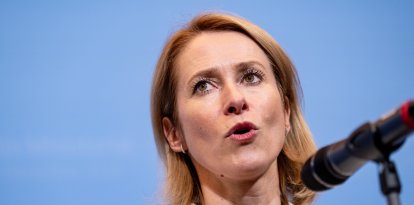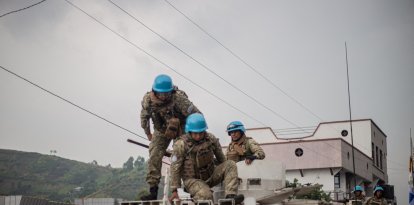Argentina: How much public money has Sergio Massa used to tackle Milei?
The Peronist and the libertarian will battle it out to be the next president of the South American country next Sunday, November 19.

Cordon Press
Sergio Massa and Javier Milei will compete for the presidency of Argentina next Sunday, November 19. After being the two candidates with the most votes in the October general elections, the current Minister of Economy and the libertarian advanced to a second round in which they will face each other head-to-head.
Although many pollsters expected this scenario, it was surprising that Massa, being the head of an administration that holds a 42% poverty and an 849% accumulated inflation since December 10, 2019, was the most voted option with 36% of the votes, seven points above Milei's 29%.
How did we arrive at this situation? As reported by Voz Media at the time, even though most pollsters found the libertarian flirting with a victory in the first round, the result could be explained by three achievements of Massa's campaign: the recovery of the votes lost in the northern provinces and the Province of Buenos Aires (the most populated district in the country), scaring the population about Milei's proposals and carry forward the "silver plan," which consisted of implementing a series of beneficial measures in the short term for the middle class and the most vulnerable sectors.
Regarding this last point, the objective was to put money in people's pockets so they could increase consumption because, as described by the popular analyst Jaime Durán Barba, "the country's economy means that I want to give my son an ice cream when I take him to the park."
In other words, Massa gave public money, taxpayer money, to increase his chances of winning the elections.
Massa's public spending to rebound in the elections
The Libertad y Progreso Foundation, a local think tank, produced a report on the increase in public spending that the Argentine Government promoted after the primaries to boost Sergio Massa's candidacy for the general elections and shared it with Voz Media.
According to the document, these were the main spending measures:
- Freezing of the official exchange rate until November 15.
- Freezing prepaid fees until December (when it will increase by 11.5%).
- Freezing the price of a basket of medicines until October 31.
- Freezing of public service rates (no deadline).
- Freezing bus, train and subway fares (no deadline).
- The application of the fuel tax was postponed until February 2024.
- Extension on the payment of contributions and VAT for the Self-Employed for September, October, November and December 2023.
- Extension on the payment of the tax component of the monotax for categories A, B, C and D.
- Reinforcement of 47,000 pesos in October and November for informal workers.
- Modification of the Income Tax, lowering the direct tax pressure on higher-income workers.
- 21% refund on debit card purchases.
- Discretionary bonuses for retirees of 37,000 pesos in September, October and November, to which other bonuses of $15,000 and $20,000 were added between October and November.
- ANSES subsidized loans with rates of 29%.
- Subsidized loans for monotributistas (self-employed).
- Food bonus of 40,000 pesos PAMI (social work for retirees dependent on the Ministry of Health).
- Reinforcement of Alimentar Card in two installments, October and November.
- Reinforcement of 20,000 pesos ($10,000 in September and $10,000 in October) for beneficiaries of the Empower Work program.
- Pre-trip 5: tourist pre-sale program that reimburses 50% of the value of the trip.
What was the cost of this package?
According to Libertad y Progreso, the fiscal cost of the "silver plan" reached 2.1 trillion pesos, equivalent to 1.1% of GDP, not counting the modification of profits starting in 2024.
"You cannot cover the sun with your hands; the government does not have stocks to finance the silver plan and is not in a comfortable fiscal situation either. The largest gap between income and expenses has to be financed in some way, and the Central Bank reappears, which has become the main financier of the deficit. It is something very risky in the context of such high monthly inflation," said Eugenio Marí, chief economist of the Libertad y Progreso Foundation.
RECOMMENDATION





















